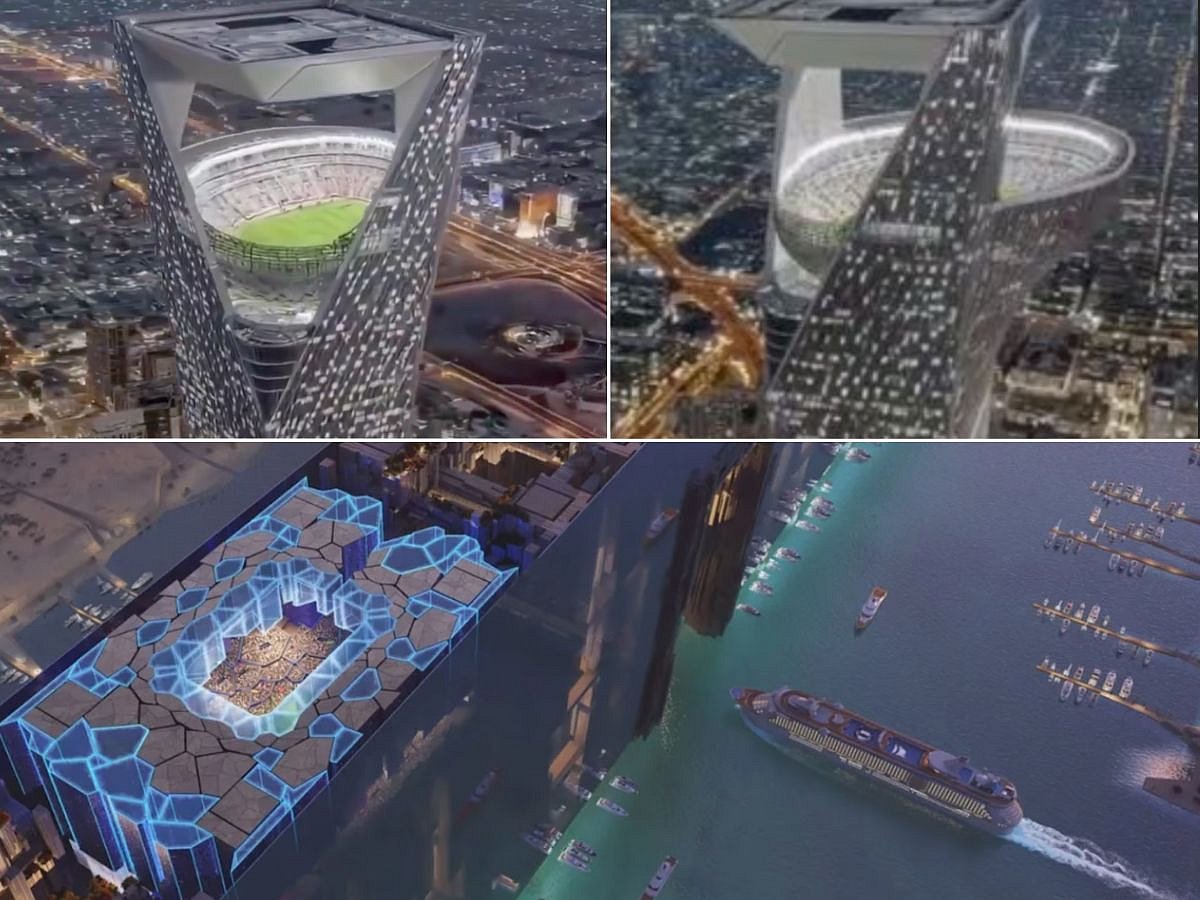The Reality of Saudi Arabia’s ‘Sky Stadium’ for 2034 World C
Recently, a striking image of a football stadium perched atop a skyscraper in Saudi Arabia captured the internet’s imagination. This so-called “Sky Stadium,” supposedly located 350 meters above the desert, quickly went viral, sparking excitement and speculation. However, the reality behind this captivating concept is far less sensational than it appears.
The Origin of the ‘Sky Stadium’ Concept
The viral image of the “Sky Stadium” features a dazzling football pitch illuminated against a desert backdrop, leading many to believe it was part of Saudi Arabia’s ambitious plans for the 2034 World Cup. However, local media and official sources have not corroborated this claim. No credible reports from Saudi journalists have mentioned such a stadium, raising questions about its authenticity.
The image that sparked this frenzy is actually an AI-generated creation, which has misled many into thinking it represents a real project. In contrast, the actual plans for the World Cup include traditional stadiums, with no mention of a futuristic venue suspended in the air.
The Reality of Saudi Arabia’s World Cup Plans
Saudi Arabia is indeed preparing for the 2034 World Cup, but the focus is on constructing multiple conventional stadiums rather than a fantastical sky-high venue. The King Salman International Stadium in Riyadh, which will accommodate 92,760 spectators, is among the key facilities being developed. Reports indicate that the country plans to build 15 stadiums to host the tournament, emphasizing a more grounded approach to infrastructure.
While the idea of a “Sky Stadium” may be captivating, it diverges significantly from the actual developments underway in the region. The NEOM project, which includes plans for innovative urban living and sustainable technologies, is where the real excitement lies, but it does not feature a stadium in the sky.
The Role of Social Media and Misinformation
The rapid spread of the “Sky Stadium” concept highlights the power of social media in shaping perceptions. TikTok and other platforms have amplified the narrative, with users sharing exaggerated claims about the stadium’s features, such as being solar and wind-powered and seating 46,000 fans. These assertions, while intriguing, lack any basis in reality and have been debunked by reputable news outlets.
Despite the absence of any official confirmation, the allure of the “Sky Stadium” has captivated many, leading to a mix of humor and disbelief across social media. While it’s easy to get swept up in the excitement of such grand visions, it’s essential to approach these claims with skepticism.
FAQs
What is the ‘Sky Stadium’?
The ‘Sky Stadium’ is a viral concept that depicts a football pitch located 350 meters above the ground on a skyscraper, but it is an AI-generated image and not part of any official plans for the 2034 World Cup.
Are there any real stadiums being built for the 2034 World Cup?
Yes, Saudi Arabia is constructing 15 traditional stadiums for the 2034 World Cup, including the King Salman International Stadium in Riyadh, which will seat over 92,000 fans.
How has social media influenced the perception of the ‘Sky Stadium’?
Social media platforms like TikTok have contributed to the rapid spread of the ‘Sky Stadium’ concept, leading to exaggerated claims and widespread misinformation about its existence and features.
Conclusion
While the viral “Sky Stadium” has captured the imagination of many, it is important to recognize it as a product of AI creativity rather than a real project. Saudi Arabia’s actual preparations for the 2034 World Cup focus on building traditional stadiums, showcasing the country’s commitment to hosting a successful tournament. As developments unfold, staying informed through reliable sources will provide clarity on the future of sports infrastructure in the region.
The concept of the “Sky Stadium” reflects a growing trend in architectural imagination, where futuristic designs often capture public interest. However, the distinction between visionary concepts and practical implementations is crucial, especially in the context of large-scale events like the World Cup.
As Saudi Arabia continues to invest in sports infrastructure, it is also focusing on enhancing its global image through various initiatives, including hosting international sporting events and cultural festivals. This strategy aims to diversify the economy and promote tourism, aligning with the country’s Vision 2030 plan, which emphasizes modernization and development across multiple sectors.
Also Read:
Top Youth Football Academies Shaping Future Talent







